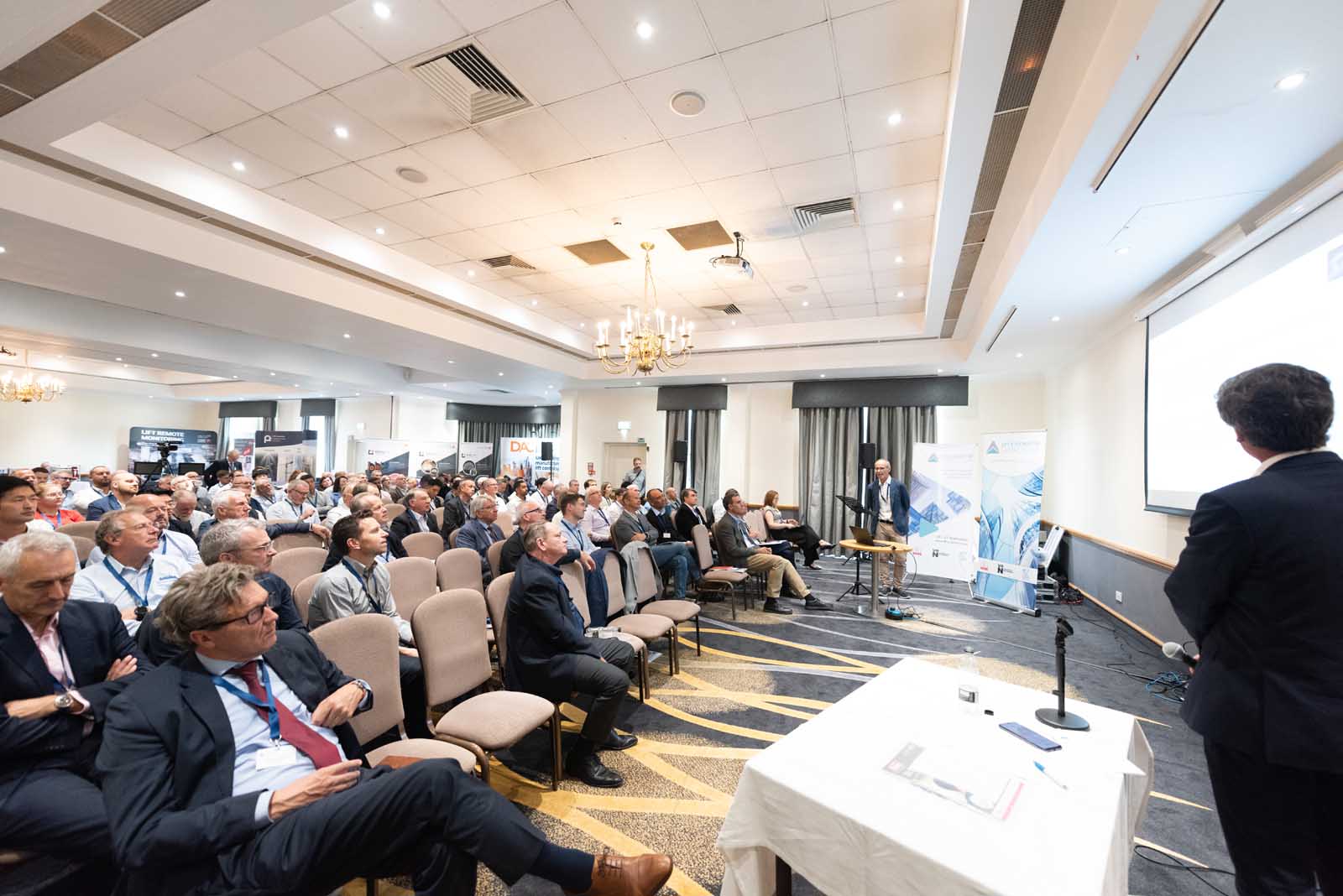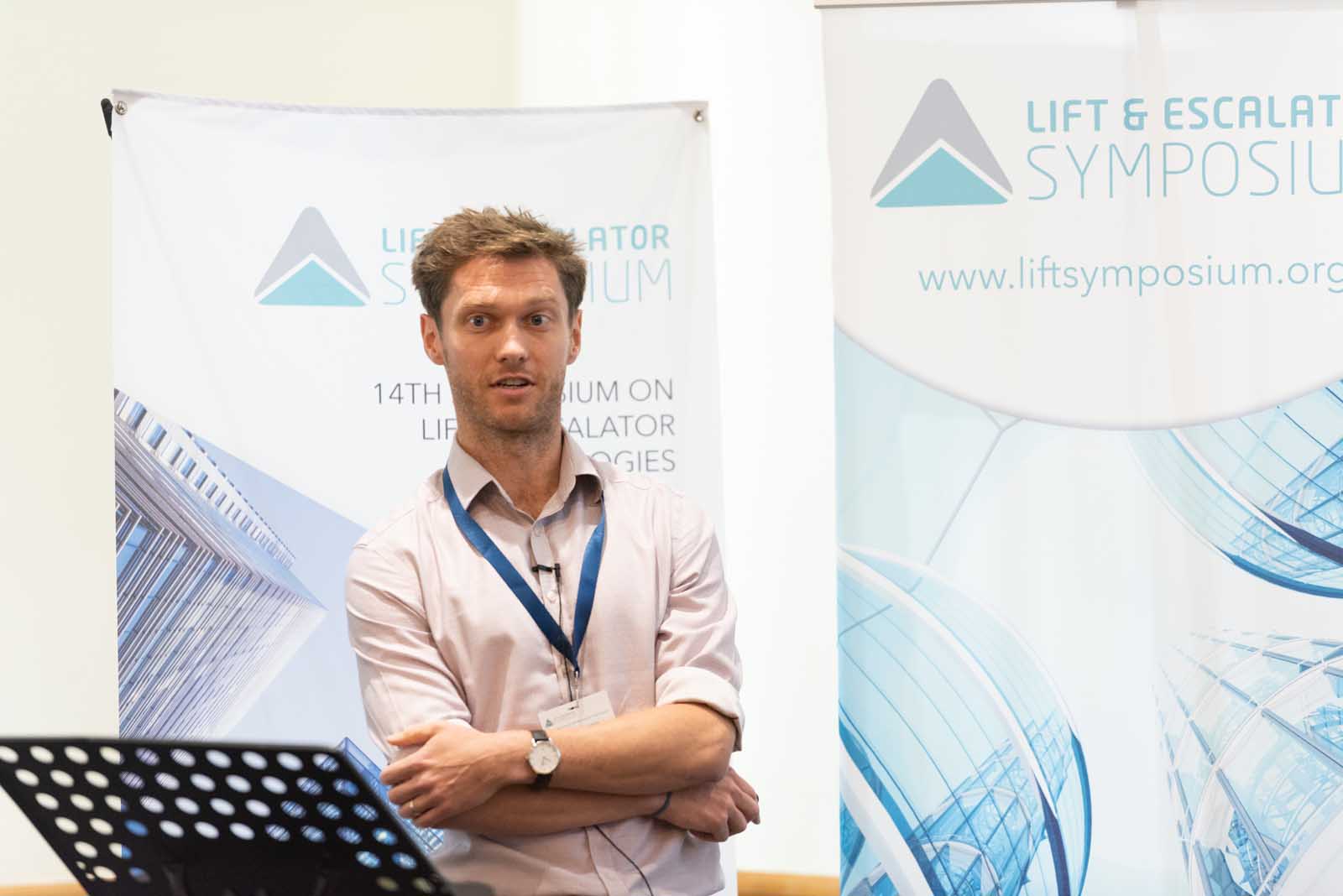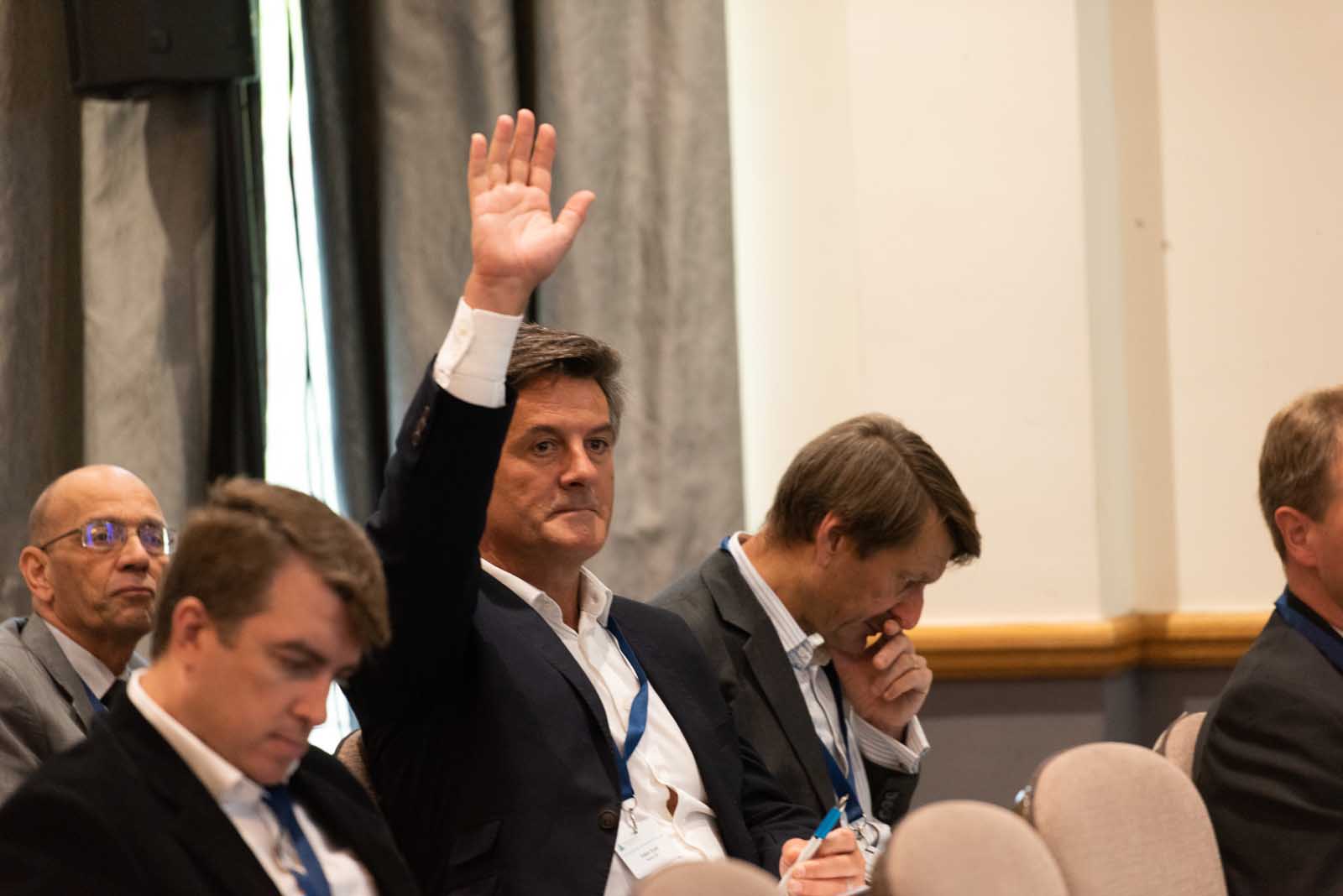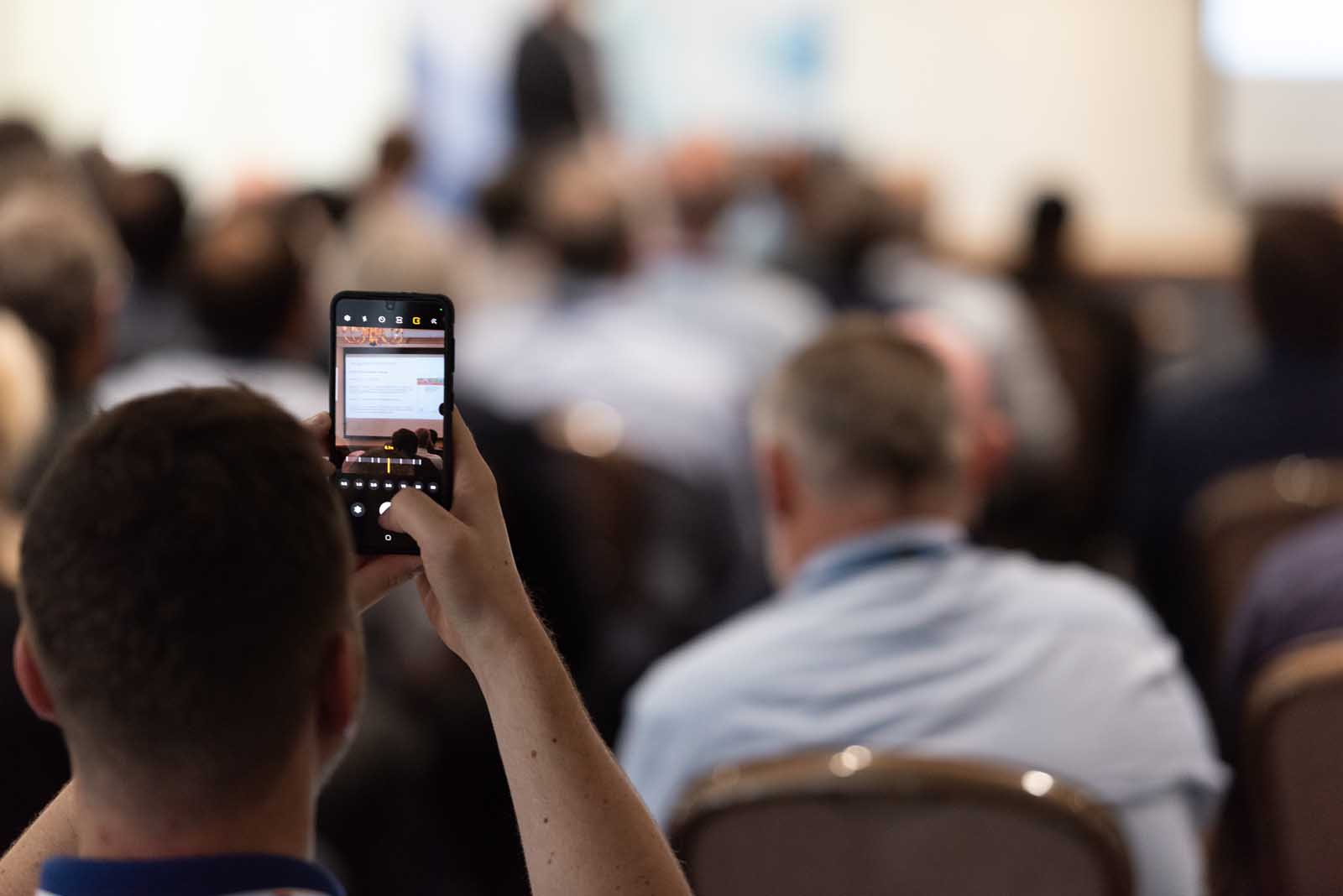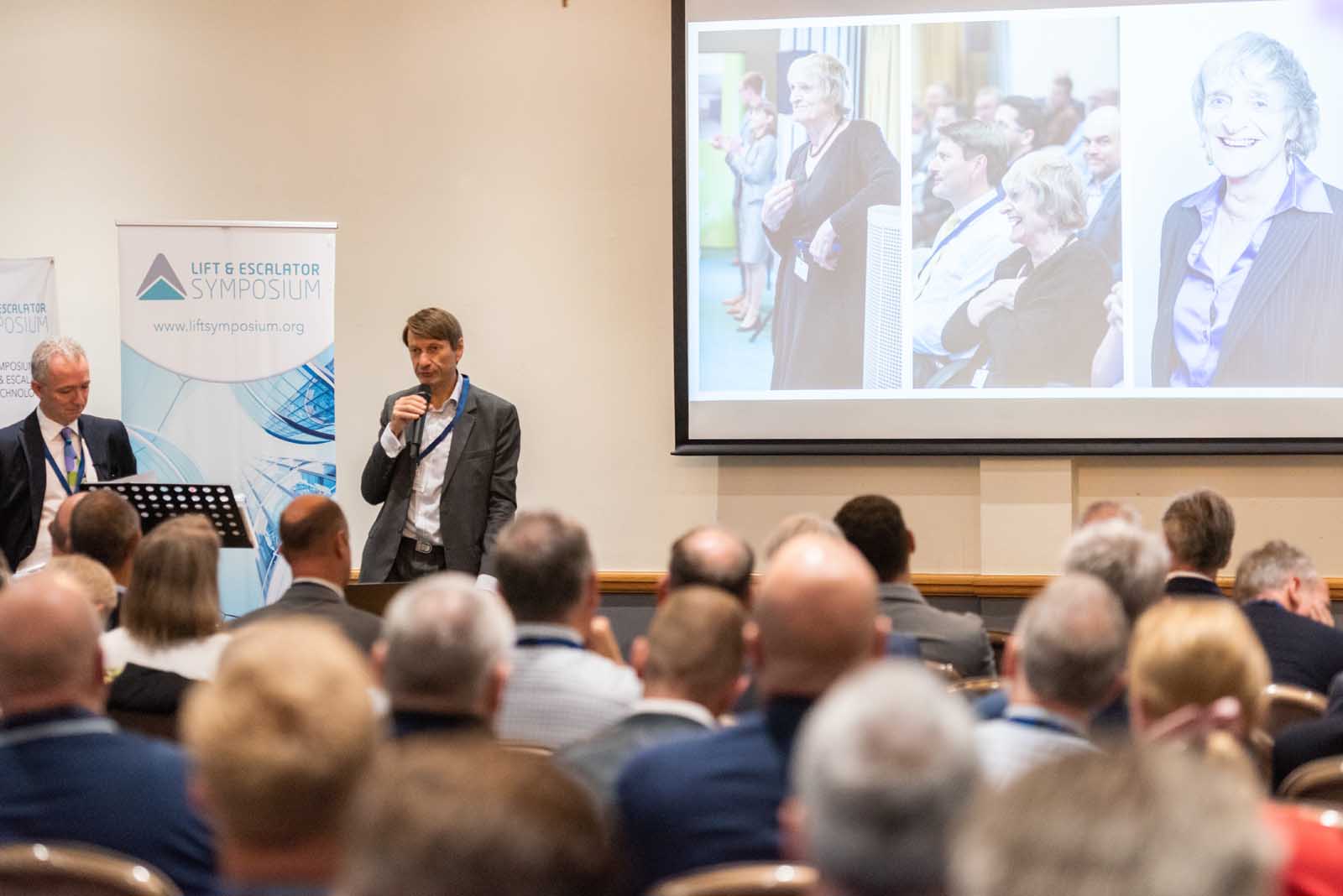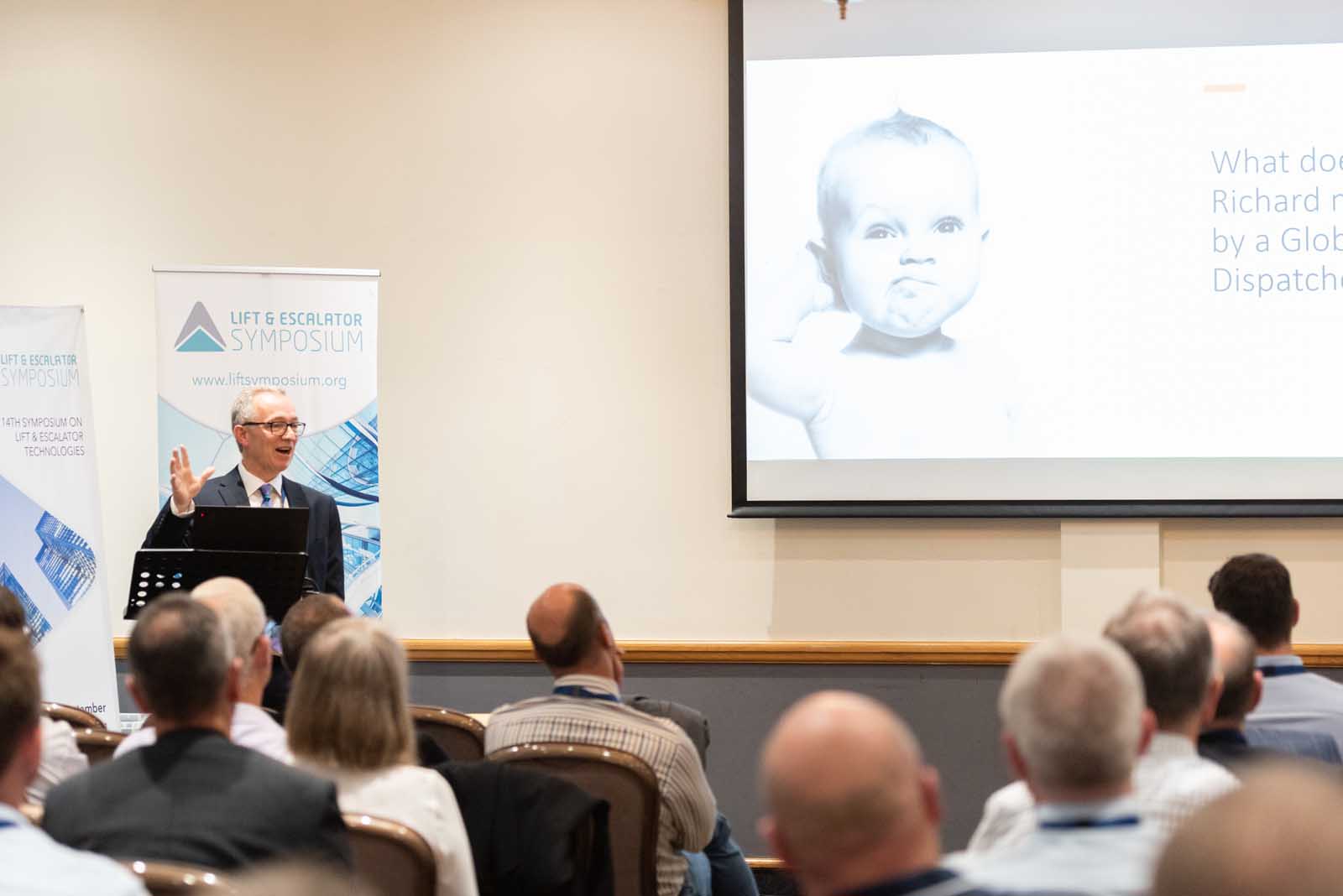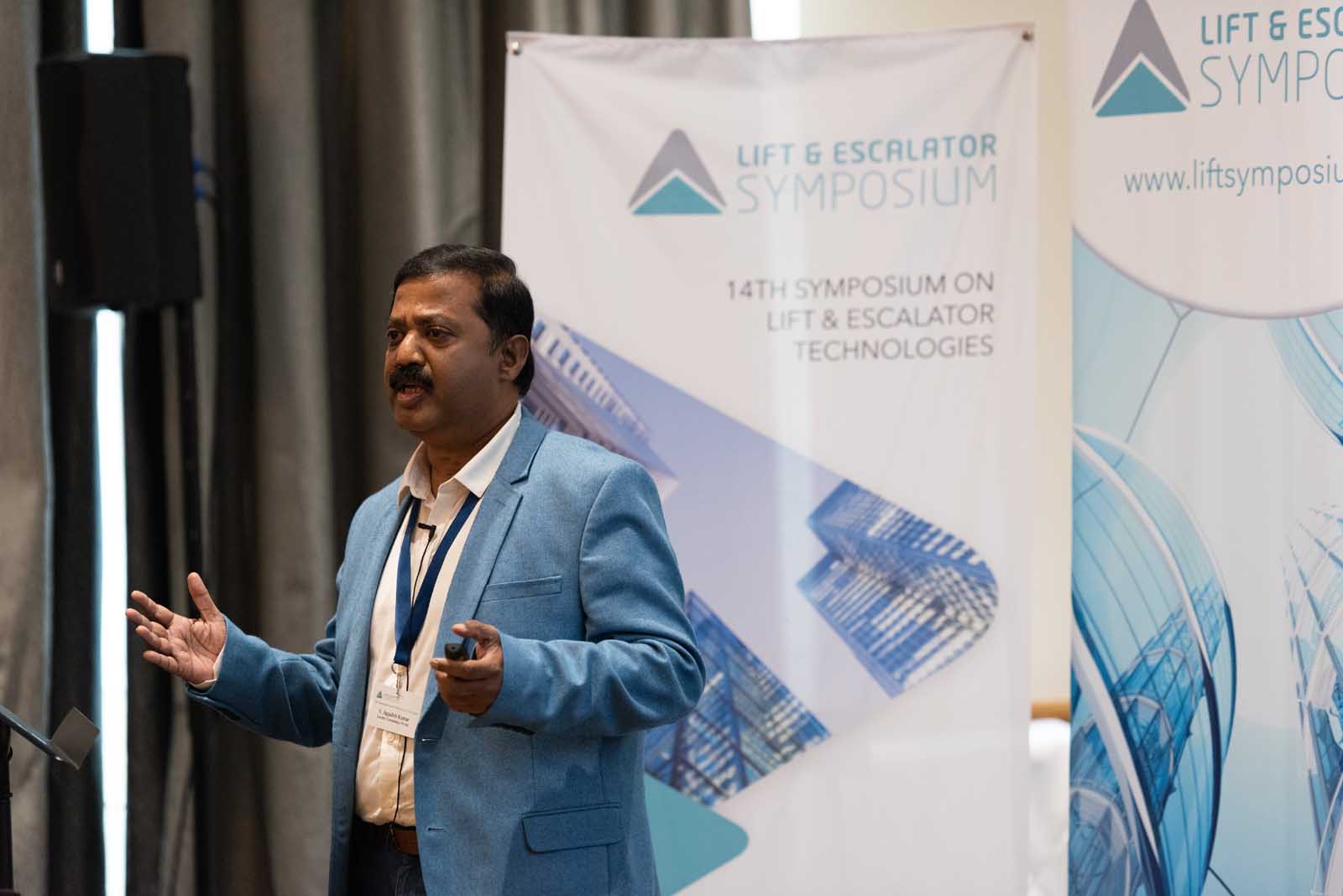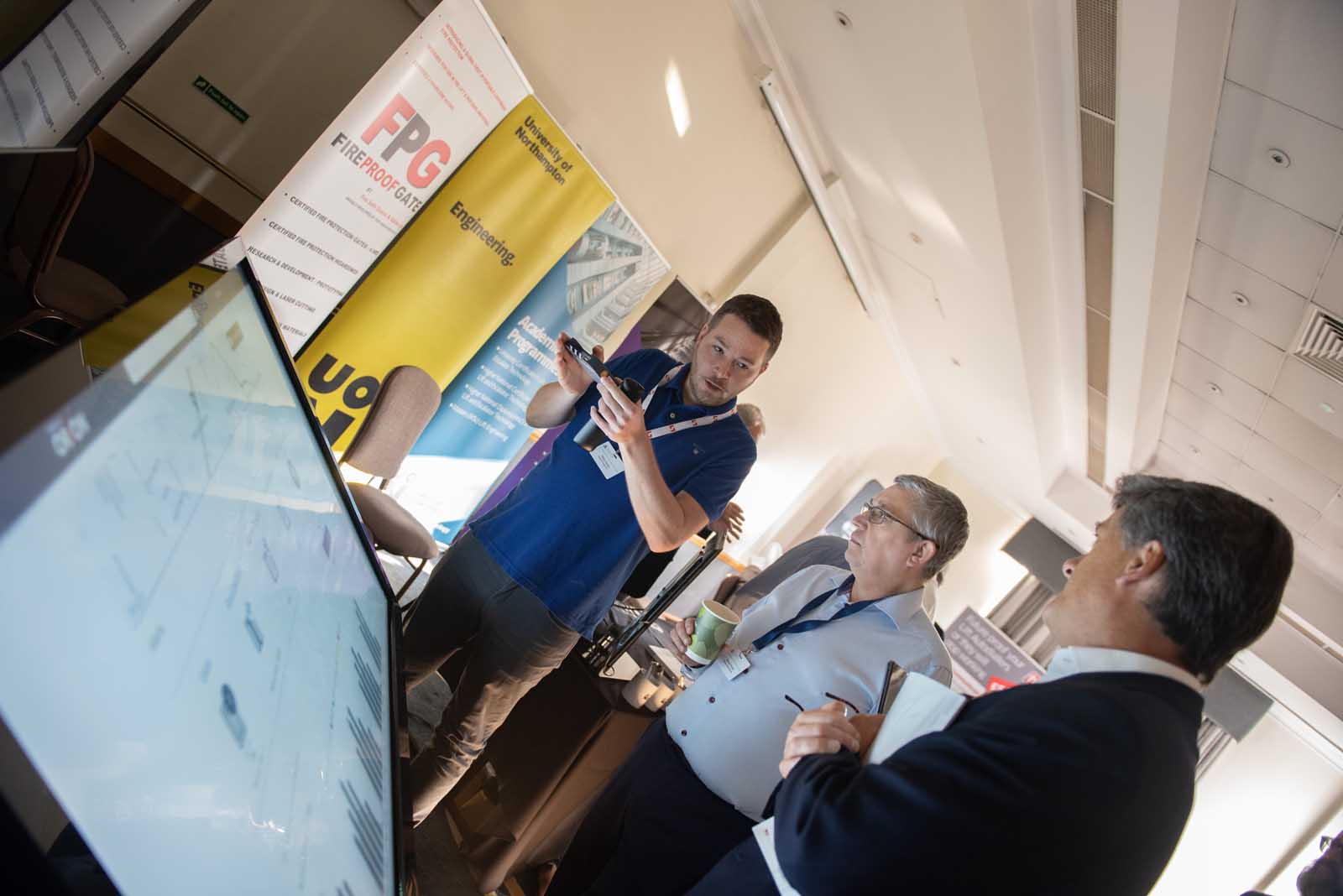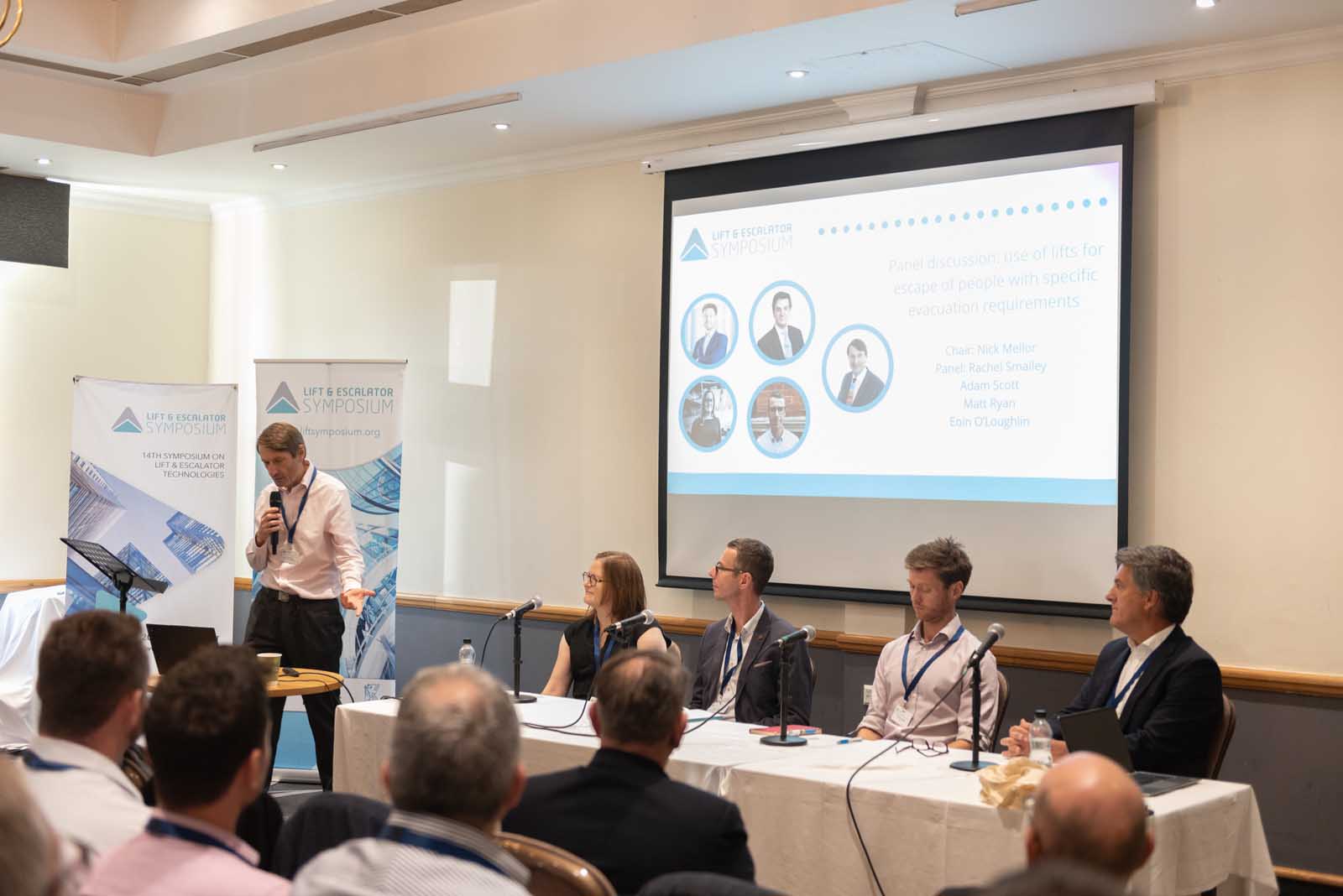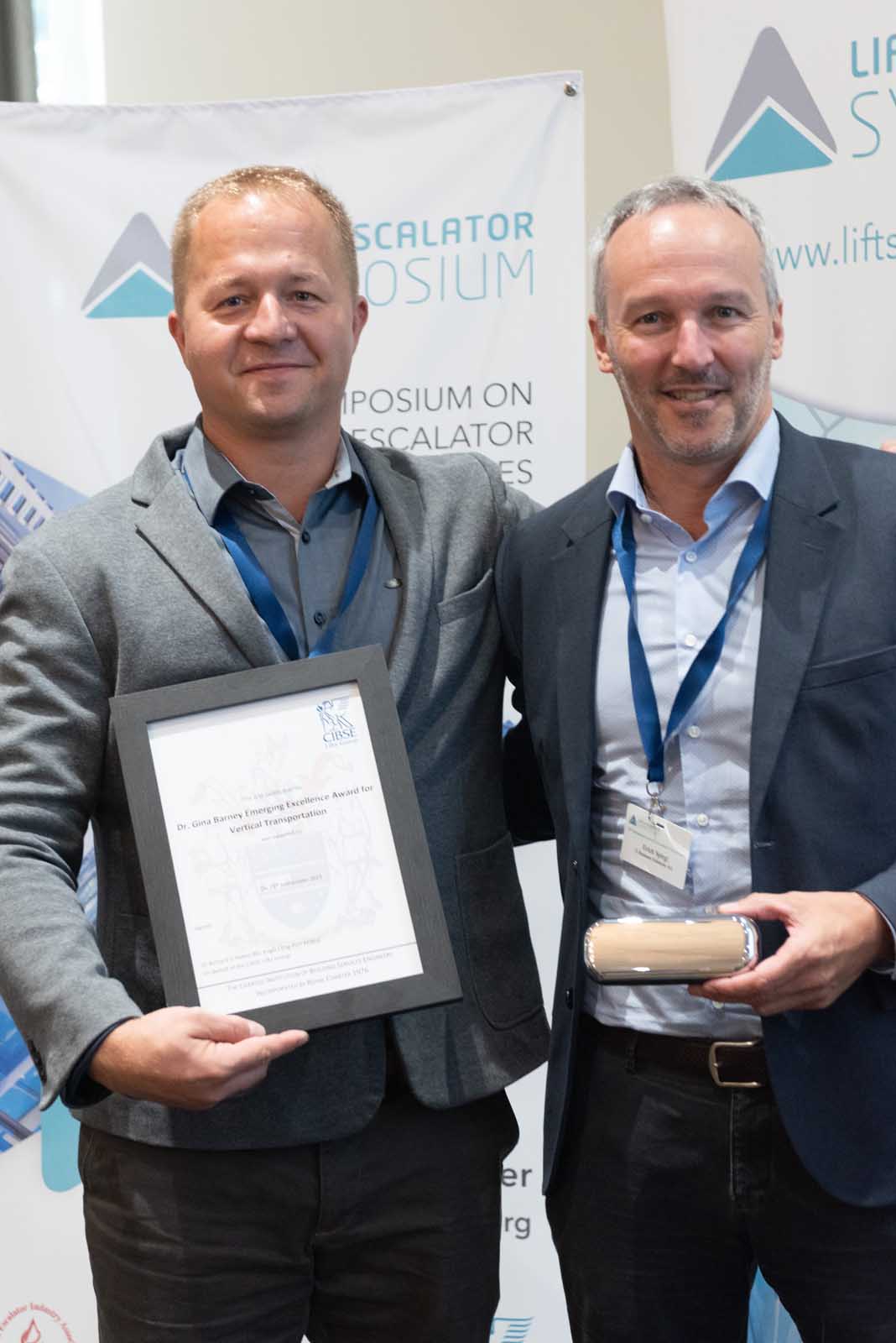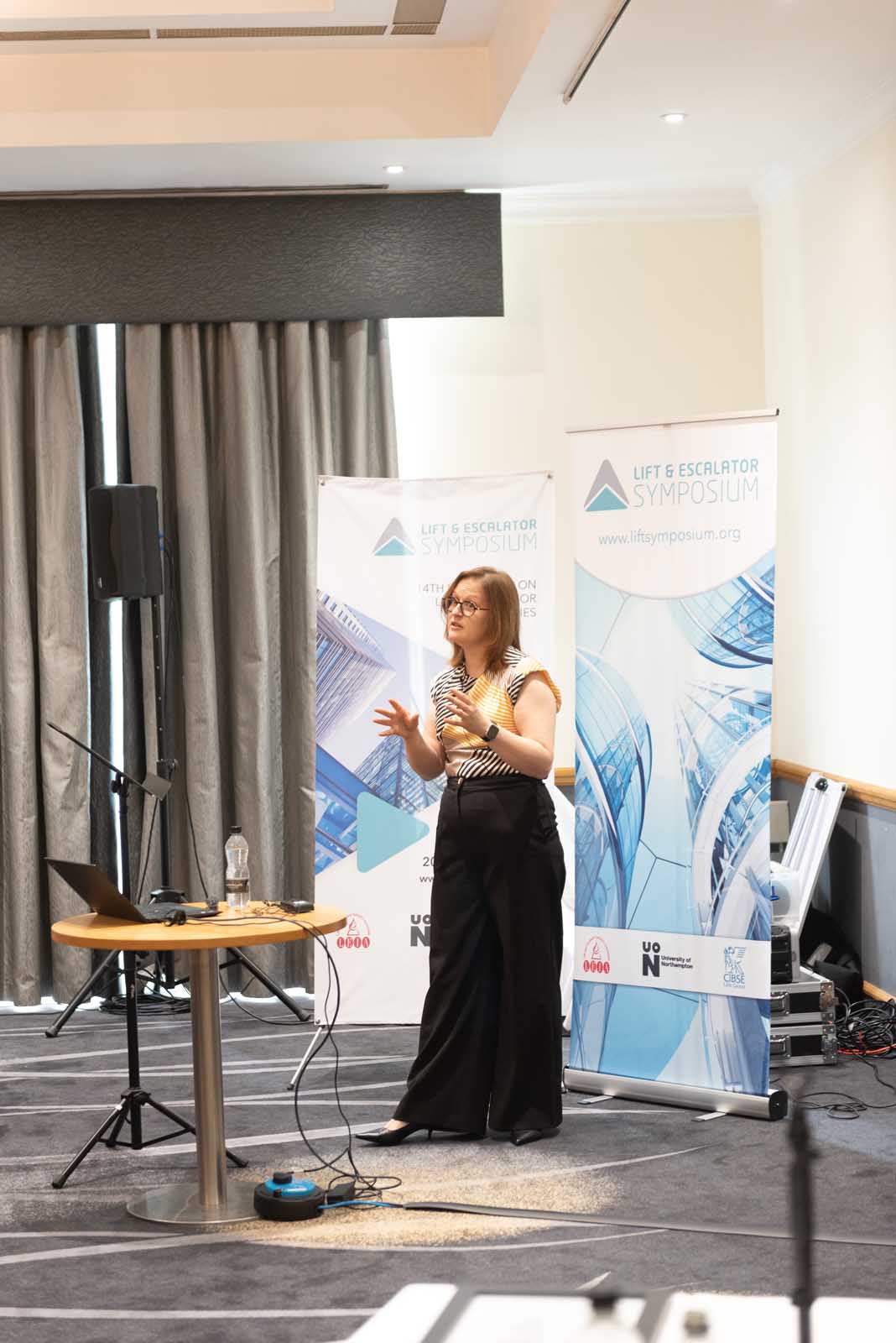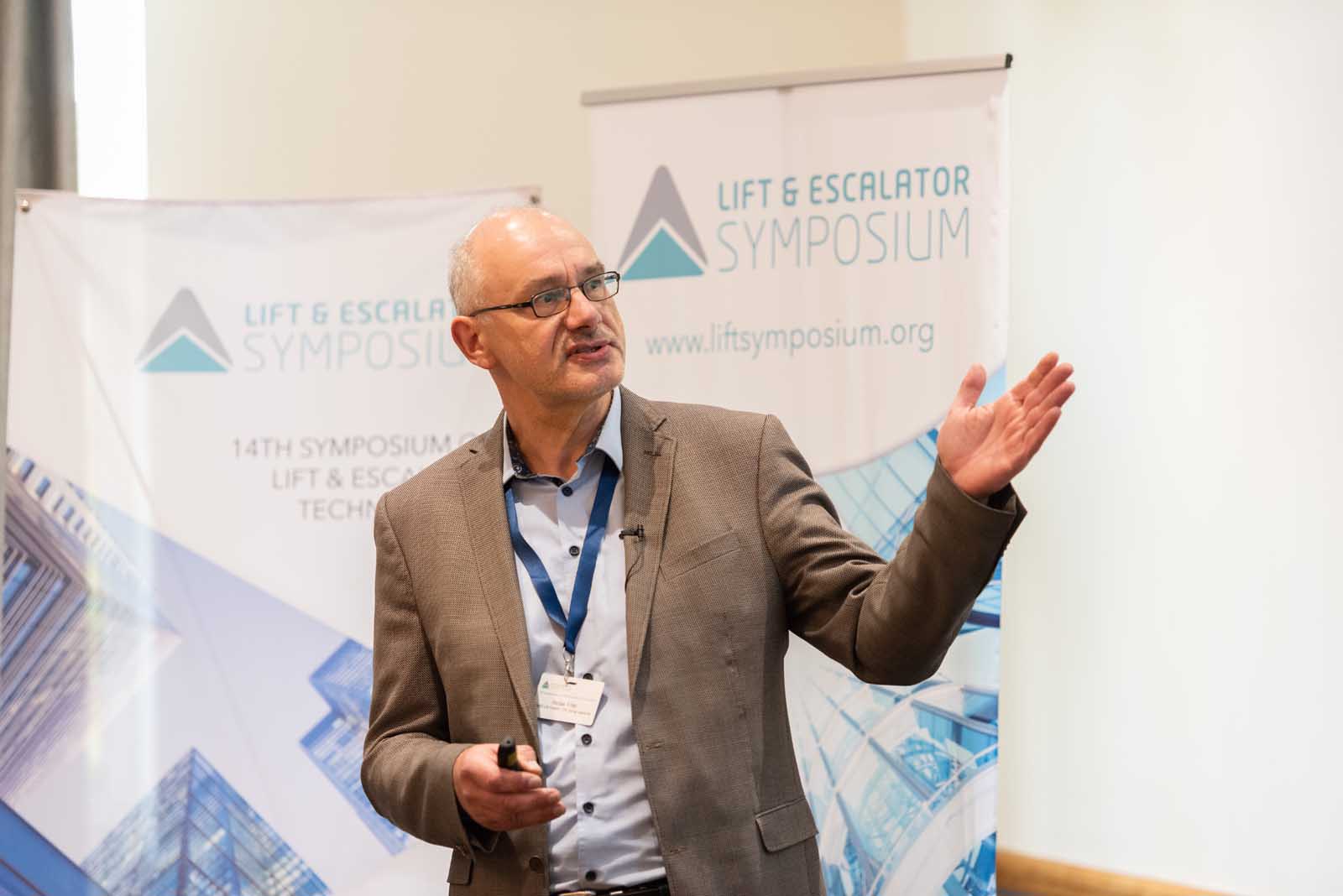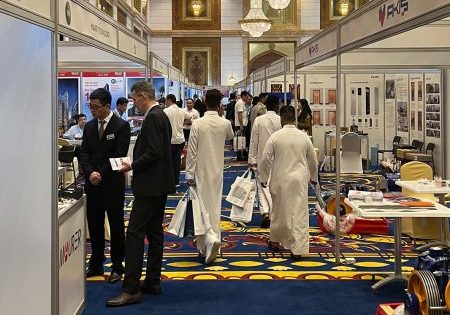14th Symposium on Lift and Escalator Technologies
Dec 1, 2023
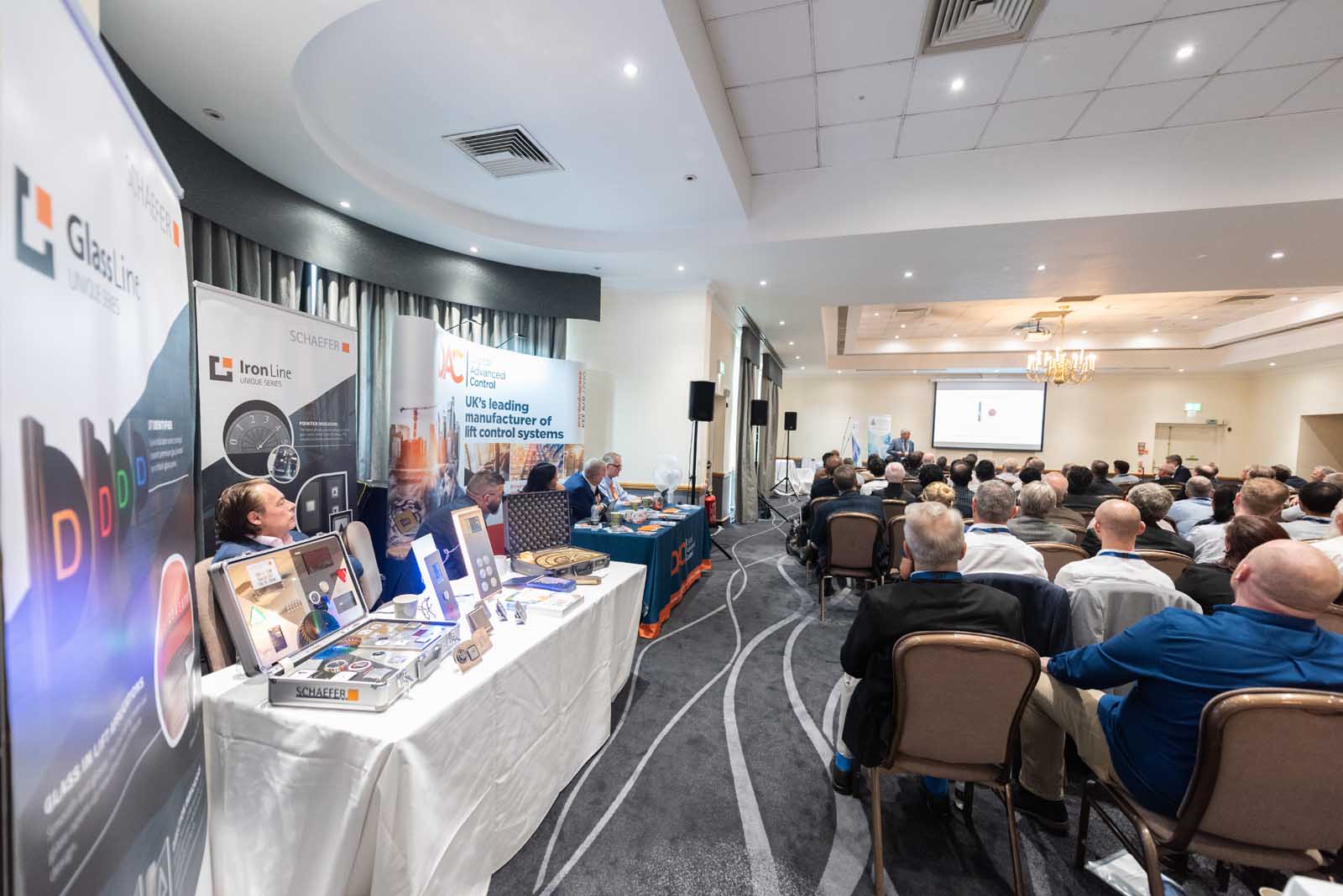
Important industry themes were discussed at this annual event.
by Madeleine Olausson, EWUK Correspondent
The 14th Symposium on Lift and Escalator Technologies, a very popular event with approximately 130 participants from 16 different countries, took place at the Hilton Hotel in Northampton, U.K., on September 20-21. There were many returning participants, but also quite a few people who were there for the first time, looking to understand what is going on in the industry and establishing new contacts.
A total of 20 papers were presented over the course of two days. The agenda had seven different sessions: Accessibility, Planning & Design, IoT (Internet of Things) & Technology, Traffic Simulation & Dispatching, Evacuation, Use of Lifts for Escape of People With Specific Evacuation Requirements (panel discussion) and Engineering. This article will highlight only a few of all the excellent papers presented.
David Cooper, from Lift & Escalator Symposium Trust U.K., opened the symposium by reinforcing that all papers that are presented have been peer-reviewed to ensure the quality of the symposium stays high. Cooper also announced the newly established Dr. Gina Barney Emerging Excellence Award for Vertical Transportation, which was going to be presented to the team who presented some particularly good research over the two days. The award was in honor of the late Dr. Gina Barney, who passed away in July.
Richard Peters also added that, on the committee, they had had to replace the late Dr. Gina Barney with five people, indicating her immense capabilities.
Richard Peters, from the Lift & Escalator Symposium Trust, gave a heartfelt and emotional tribute to the late Dr. Barney, reading aloud a previously published obituary from Lift Industry News. Peters also added that, on the committee, they had had to replace Dr. Barney with five people, indicating her immense capabilities. Several other members from the Lift & Escalator Symposium Trust also said a few words and shared fond memories from their interactions with Dr. Barney.
The symposium started with keynote speaker Rachel Smalley, head of Inclusive Design at Jacobs, speaking engagingly about the principles of inclusive design, and how to create places that are welcoming and usable for all groups of people. The topic resonated with many participants and also appeared to be an eye-opener. Only 4% of disabled people are wheelchair users in the U.K., yet wheelchairs are what tends to first spring to mind when the need to design for level access arises.
Smalley touched on traditional building styles with grand steps up to the main entrance as a way of signalling status. At the time these buildings were built, societal expectations were different, as disabled people were not as accepted in society in the same way, and blame was placed on the individual for not being able to participate, rather than moving the impetus to society to help include everyone. A cultural change occurred in the 1980s and 1990s in the U.K. in the way society thought about inclusion, and the London Olympics in 2012 brought about further change.
Smalley also showed several examples of accessible and inclusive design, respectively, and stressed the importance of considering inclusivity as early as possible in the design process. Looking at the examples helped participants reflect on whether their current projects are only “accessible” and not “inclusive.” One of the examples turned out to be Smalley’s office building in London, and she explained she would classify it as “accessible-ish”; it is according to building regulations, but she would not consider it inclusive.
Among inclusive design principles are no level change, wide doors and one entrance for everyone in order to avoid segregation of people with different needs. Once inside a building, lifts and stairs should have equal prominence. Lifts have often been hidden away down a corridor somewhere in recent times as a means of encouraging fitness, but it makes travel time longer, and more difficult, for people who are unable to use the stairs.
A discussion followed the presentation with a question about reasonable provision and whether it is possible to design a building that is truly accessible to all. It may not always be possible to design for 100% of people, but one should make sure to meet the highest proportion of people’s requirements. Different buildings will also have different requirements.
Among the papers in the Planning & Design session, Kevin Vinson, Business Development director at Otis U.K., shared some insights into the “Design, Manufacture and Installation of the Great Glass Elevator, Lift 109 at Battersea Power Station.” The concept of putting a panoramic glass lift inside a tall chimney, open to the elements, is enough to conjure up a whole raft of challenges. As the chimney is above the old work facilities, there were also limitations in where it would be possible to add the machine room. Everything regarding the lift needed to be inside the chimney, and all loads are supported from an 11-t ring beam at the top. A traditional platform lift links the lower and upper decks. A mobility impaired passenger lift doubles up as a rescue facility, enabling passengers to move from the main car to the mobility impaired passenger lift in case the main lift should fail.
A discussion followed the presentation with a question about reasonable provision and whether it is possible to design a building that is truly accessible to all.
Vinson also shared some discussions they had had on whether the glass lift was, indeed, to be seen as a lift vs machinery, as this would have an impact on the burden of conformity, with the panoramic lift regarded as a machine and the MIP lift being regarded as a lift.
Being open to the elements meant solutions were required for, among others, handling rain, strong winds, nesting animals and differences in air temperatures. The design was an OEM-manufactured solution and based on a competition. Finding out about the background to Lift 109 seemed as if it would entice any participant at the conference who had not already been, to visit Battersea Power Station and ride this very special lift.
Among the presentations in the IoT & Technology session, Rory Smith, from the Lift & Escalator Symposium Trust, U.S., talked about the “Need for Standardized Metrics and KPIs (Key Performance Indicators) for AI Performance.” Having established that the goal of AI in the lift industry is to have zero breakdowns, Smith then continued to discuss how it is possible through predictive algorithms to predict which lift is going to fail in the next two weeks using this information to repair a lift before it fails.
When evaluating the accuracy of predictive algorithms, there are also potentially false positive ones, i.e., lifts that are predicted to fail but actually not likely to do so. Predictive algorithms are not as straightforward as they sound, and point of view also matters. Smith shared an interesting calculation where the increased number of checks as a result of AI could be seen as more positive from the building manager’s point of view than the lift service manager’s.
Service quality metrics are also impacted by AI, but what is a breakdown? Self-healing lifts and running on arrival were mentioned as grey areas. Smith rounded off his presentation by encouraging everyone in the lift industry to be transparent on metrics and KPIs used.
Osamu Furuya, from Tokyo Denki University, started off day two by presenting his “Study on the Concept of Using Lifts and Escalators in Evacuation Routes Using Fragility Assessment.” With Japan being particularly exposed to seismic activity and risk of earthquakes, the aim of the study was to understand the strength and the capacity of lifts, escalators, equipment and joint parts to a certain degree of accuracy.
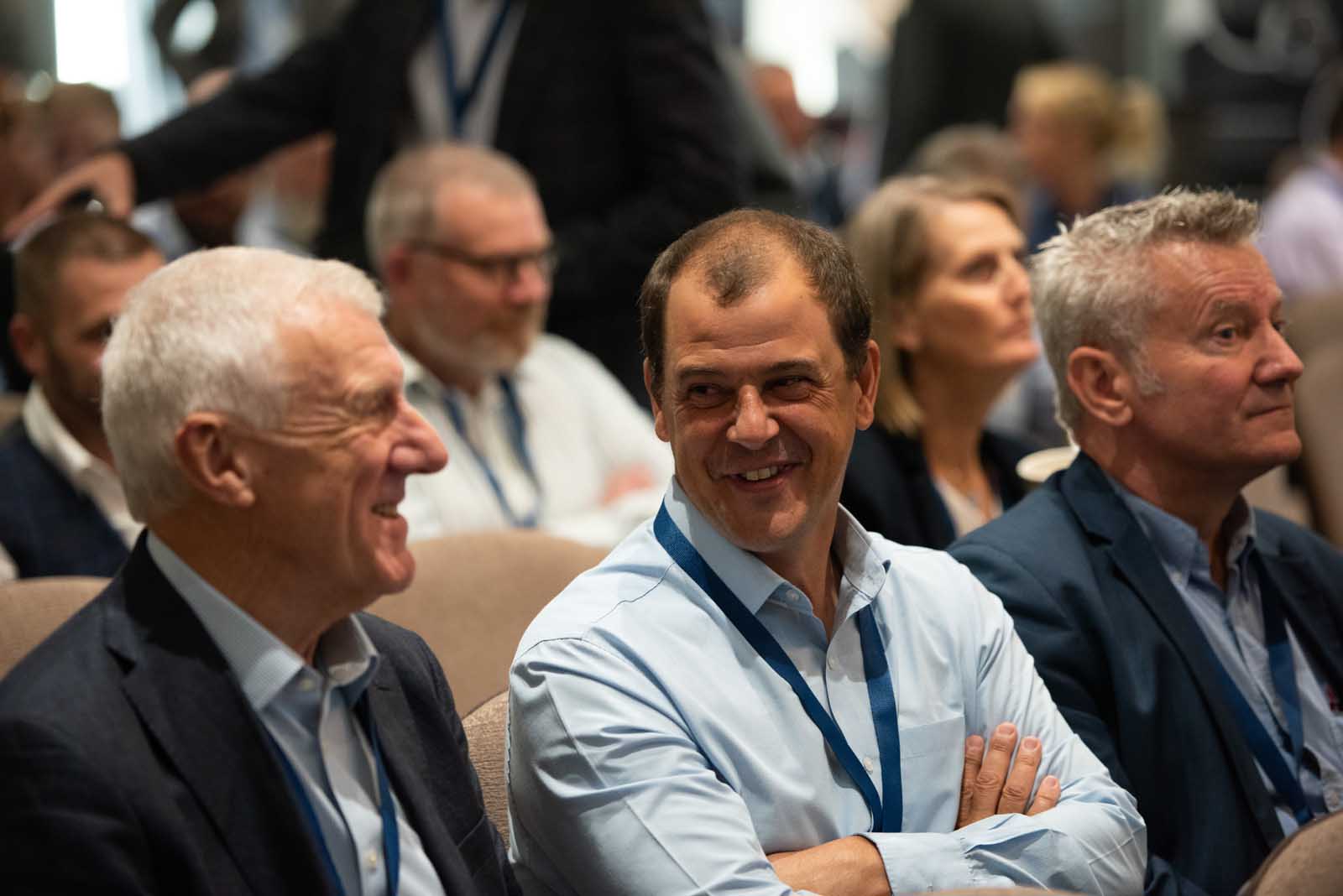
The simulation featured pedestrians in a 40-story high-rise building while looking at the effectiveness of using lifts and escalators depending on degree of damage and obstacles obstructing the view of the evacuation route. It is hoped that the simulation could also contribute to establishing bypass routes. The fact that the seismic response differs between each floor in a building, as well as congestion at staircase entrances and rooms, were also taken into account in the simulation. The conclusion was that, using both lifts and escalators, in addition to stairs, could save 70 s in evacuation time for every 10 floors of a high-rise building.
How to use lifts for evacuation purposes was also mentioned by Matt Ryan in the “Evacuation Lift Presentation.” This is an area where there is a lot of work to change people’s perception, as the one thing that all people believe is that, in the case of fire, do not use the lifts. Ryan talked about how it can actually be safe to use lifts for evacuation purposes and the need to make lifts protected and resilient.
These themes continued into the panel discussion “Use of Lifts for Escape of People With Specific Evacuation Requirements” chaired by Nick Mellor. The need to change historic mindsets and approaches was brought up with access for all and egress for all. “Access” is often top of mind, “egress” less so. Safety measures need to be provided for all groups of users.
There is a need to make changes to existing buildings, as 80% of these will be in use by 2050. The industry is very much driven by events to change regulations. However, as with any project, cost and commercial viability always come into consideration.
Office buildings are, in general, easier to prepare for evacuation compared to residential buildings. The latter tend to have transient people, and you cannot easily carry out evacuation drills in them. Understanding human behavior and how people react in case of emergencies is another important subject. The discussions during this panel were lively, and as time ran out during the event, discussions would continue on the Lift Symposium’s LinkedIn page.
The symposium concluded with the presentation of the Dr. Gina Barney Emerging Excellence Award for Vertical Transportation to Michael Eibl and Erich Spirgi for their paper on “Change of the Dynamic Elongation in Steel Wire Rope Traction Systems Over the Lifetime, Influencing Factors and Mitigating Measures.” This paper was presented in the final section of Engineering and awarded to the recipients under high applause.
The symposium was fully subscribed with quite a few participants having to rely on neighboring hotels to be able to join the event. The format of generally 15-min presentations with time for one or two questions in the forum seems to be very popular with the audience. Although there were 20 papers on the agenda, there was ample opportunity to network, both during the breaks and also during the dinner the first day of the conference.
Gemma Moore FdA, BA(Hons), account manager at Dewhurst Ltd., posted on LinkedIn that, with the learning, listening and networking provided by the event, she was “learning so much and seeing some people from overseas I have only met on LinkedIn, so this has been a successful first day.”
There were also quite a few companies exhibiting in the conference room, showcasing their latest products and services. The list of exhibitors included CP Automation, Digital Advanced Control, Drucegrove, Lester Controls, Lift Remote Monitoring, University of Northampton, SafeLine, Sassi Lift Systems, Schaefer, Thames Valley Controls and more.
Lester Controls said:
“We want to extend our heartfelt thanks to the Lift and Escalator Symposium for having us at this incredible event. It was an inspiring gathering of minds, and we were thrilled to be a part of it. Everyone at Lester Controls would also like to express our gratitude to everyone who visited our stand. Your interest, questions and feedback mean the world to us. It’s through these meaningful interactions that we continue to innovate and strive for excellence within our industry.”
All papers are available to download in full at The Lift and Escalator Library.
The work to prepare the 15th symposium started as soon as the 14th was over. The 15th Symposium on Lift & Escalator Technologies will be held September 18-19, 2024 at the Kettering Park Hotel & Spa in Kettering, Northants.
Get more of Elevator World. Sign up for our free e-newsletter.
